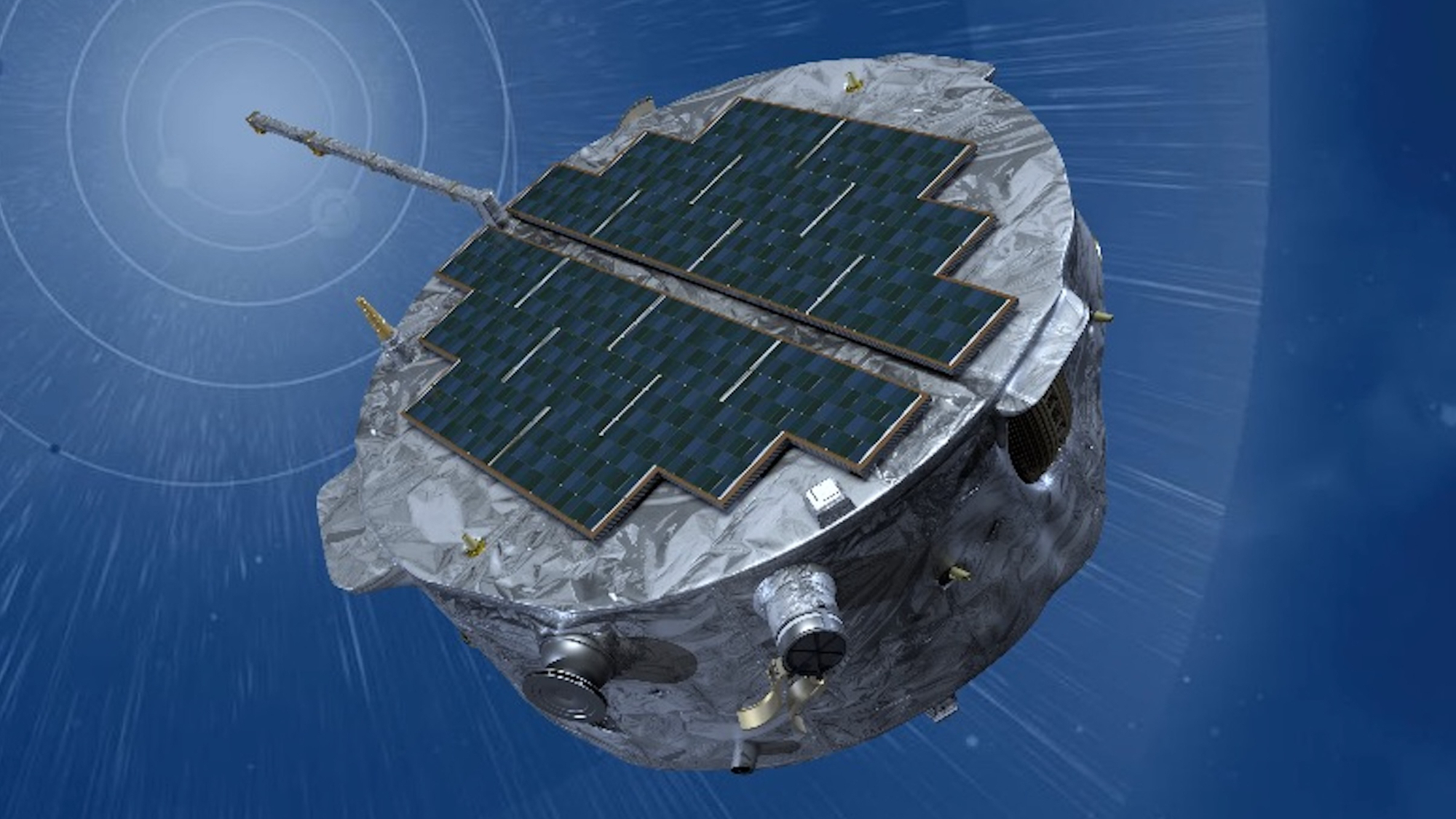NASA's IMAP probe will launch in 2025 to capture interstellar dust
The cosmic flecks may harbor clues about the formation of our solar system and its planets.

In May next year, NASA plans to launch a spacecraft to capture minuscule dust particles streaming into our solar system from interstellar space, in hopes of studying the very building blocks of our cosmic backyard.
The primary goal of the mission, called the Interstellar Mapping and Acceleration Probe (IMAP), is to study the huge, sun-created bubble known as the heliosphere that surrounds our solar system. The heliosphere shields Earth and other planets from cosmic radiation entering our solar system from the outside.
IMAP will carry 10 science instruments for in situ and remote observations. One of them, the large, drum-shaped Interstellar Dust Experiment (IDEX), is designed to capture and analyze tiny dust particles from outer space that penetrate through the heliosphere and into our solar system.
"They're little packets of information from long ago and far, far away," Scott Tucker, the project manager for IDEX at University of Colorado, Boulder, said in a statement.
Related: NASA's IMAP probe will study the solar system's protective bubble
Scientists once regarded these dust particles as annoying interrupters of measurements of accurate distances to the stars. But they're now seen to harbor valuable information about the formation of galaxies, molecular clouds and planets. These cosmic flecks form in stars and are blasted into space via explosive stellar deaths known as supernovae. They ferry valuable information about the formation processes of their stars, and also about other processes they become part of as they travel through the space between stars.
So, despite their altered morphologies as they zip through deep space, "they're still the closest material we have for understanding the original building blocks of the solar system," according to Mihály Horányi, who is the IDEX principal investigator and a professor at the Laboratory for Atmospheric and Space Physics at UC Boulder.
Get the Space.com Newsletter
Breaking space news, the latest updates on rocket launches, skywatching events and more!
Capturing these particles is not easy, as they span a few millionths of an inch and travel at about 100,000 mph (160,000 kph). "We've got to take both really fast and large particles and smaller and slower particles and measure them with the same instrument," said Tucker.
Once the IMAP probe reaches its destination — Lagrange Point 1, about 1 million miles (1.6 million kilometers) from Earth — IDEX will open its 20-inch-wide (51 centimeters) aperture to capture dust zipping by, "a bit like a humpback whale scooping up krill," reads a statement by UC Boulder, where IDEX was built. When these particles smash into IDEX, they'll vaporize into "a cloud of ions" that the instrument will analyze, shedding light on their chemical makeup.
Since these dust grains are so sparsely distributed in our solar system, scientists say the IMAP probe may collect only a few hundred of them across its two-year operational lifetime.
Last week, the science instrument, including a plaque engraved with the names of at least 87 team members, was loaded onto a delivery truck for its destination at the Johns Hopkins University Applied Physics Laboratory in Maryland, where it will be installed on board the IMAP spacecraft.
The mission is currently scheduled for launch between April and May next year.
Join our Space Forums to keep talking space on the latest missions, night sky and more! And if you have a news tip, correction or comment, let us know at: community@space.com.

Sharmila Kuthunur is a Seattle-based science journalist focusing on astronomy and space exploration. Her work has also appeared in Scientific American, Astronomy and Live Science, among other publications. She has earned a master's degree in journalism from Northeastern University in Boston. Follow her on BlueSky @skuthunur.bsky.social









